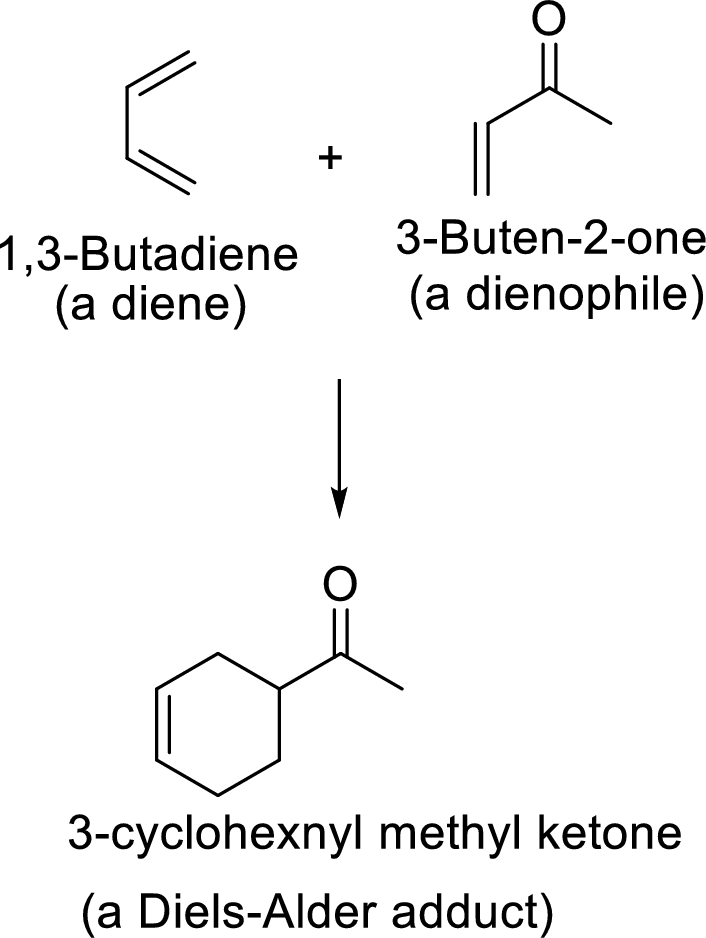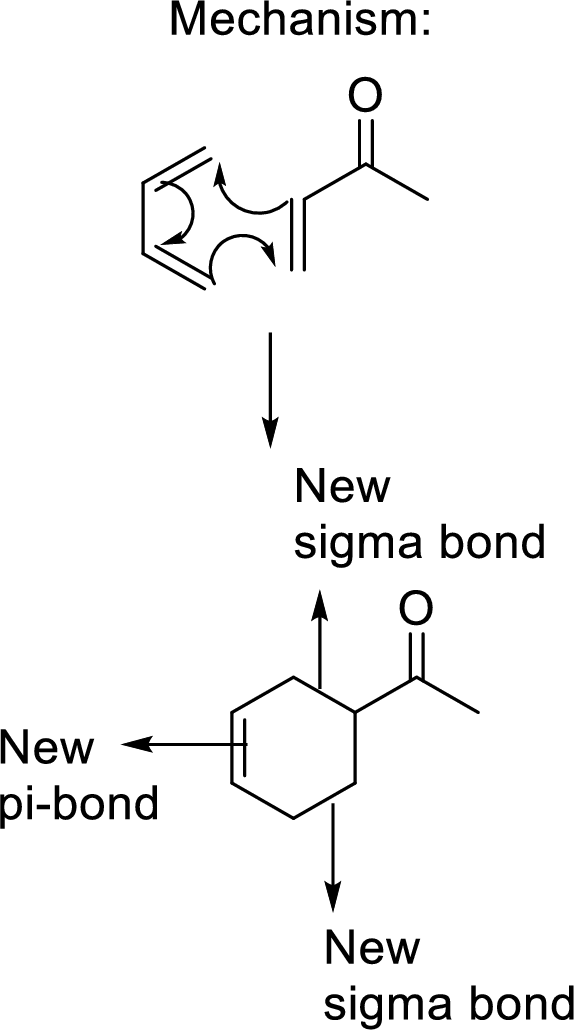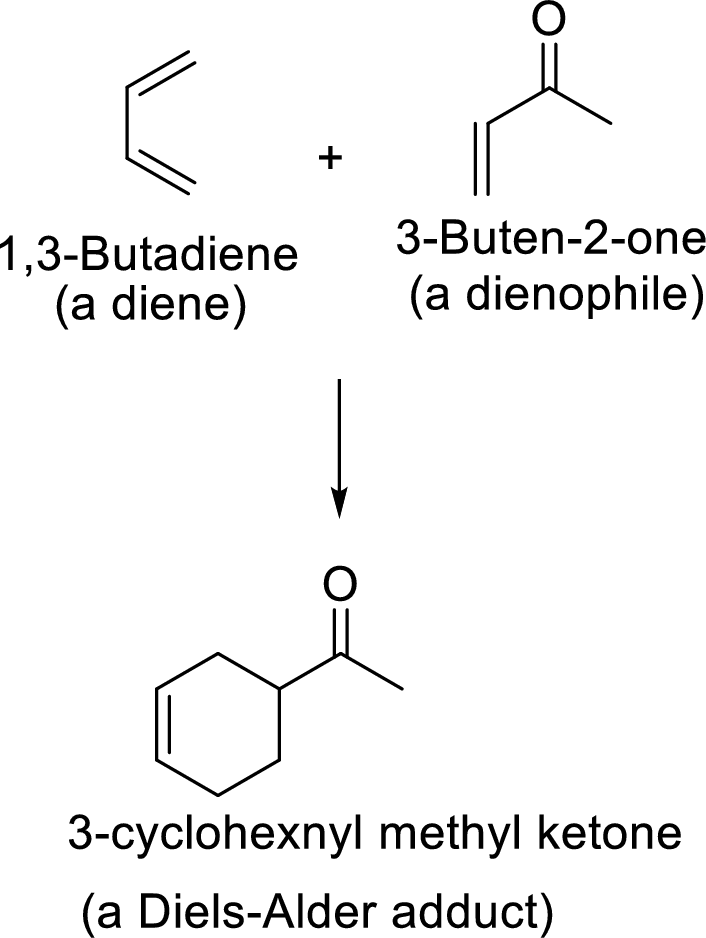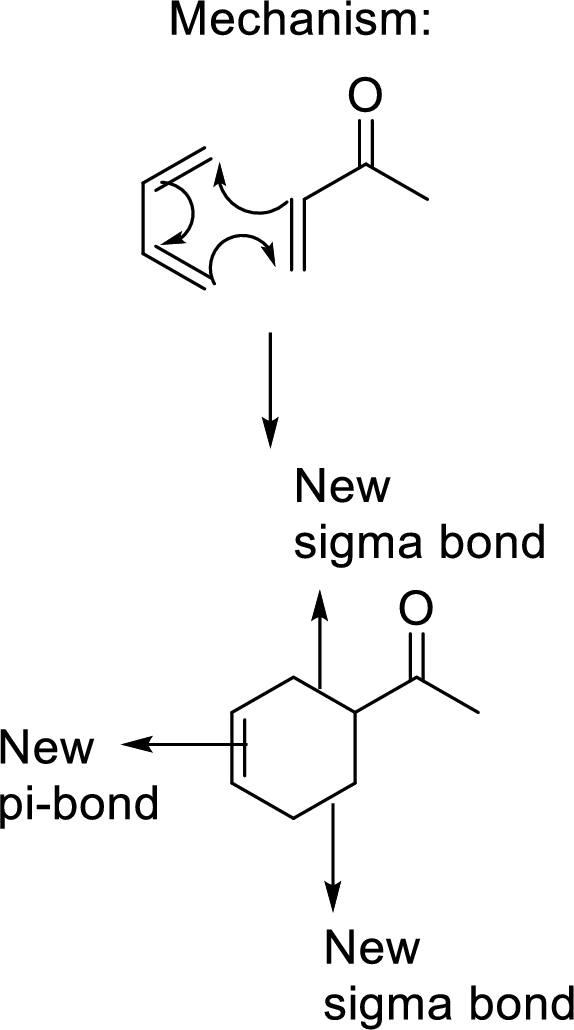
Concept explainers
(a)
Interpretation: The combination of diene and dienophile that undergoes Diels-Alder reaction to give the given adduct, has to be found.
Concept Introduction:
Diels-Alder reaction:
It is the reaction of conjugated dienes with double or triple bonded compounds which are known as “dienophiles”. The reaction is a
Example:


This mechanism shown that three
(b)
Interpretation: The combination of diene and dienophile that undergoes Diels-Alder reaction to give the given adduct, has to be found.
Concept Introduction:
Diels-Alder reaction:
It is the reaction of conjugated dienes with double or triple bonded compounds which are known as “dienophiles”. The reaction is a
Example:


This mechanism shown that three
(c)
Interpretation: The combination of diene and dienophile that undergoes Diels-Alder reaction to give the given adduct, has to be found.
Concept Introduction:
Diels-Alder reaction:
It is the reaction of conjugated dienes with double or triple bonded compounds which are known as “dienophiles”. The reaction is a
Example:


This mechanism shown that three
Trending nowThis is a popular solution!

Chapter 20 Solutions
Organic Chemistry
- Rank the following dienes in order of increasing reactivity in a Diels-Alder reaction.arrow_forwardRank the following dienes in order of increasing reactivity in a Diels–Alder reaction.arrow_forwardBased on the given information, determine the diene and dienophile of the Diels-Alder reaction.arrow_forward
- Why does the diels alder reaction often show high selectivity and predictable stereochemistry?arrow_forwardWhat diene and dienophile are needed to prepare each Diels–Alder product?arrow_forwardA Diels-Alder reaction that shows the stereospecificity of the reaction with respect to the dienophile onlyarrow_forward
- Determine what conjugated diene and what dienophile wereused to make starting materials from a given Diels–Alder adduct ?arrow_forwardwhat is the product after these compumds undergo a diels-alder reactionarrow_forwardWhich dienophile in each pair is more reactive in a Diels–Alder reaction?arrow_forward
- Draw the conjugated diene and dienophile which can be reacted to give the Diels-Alder adduct shown belowarrow_forwardSelect the conjugated diene which cannot undergo the Diels-Alder reaction.arrow_forwardExplain why butadiene sulfone was used in the Diels-Alder reaction with maleic anhydride? Why is excess employed in the reaction?arrow_forward
 ChemistryChemistryISBN:9781305957404Author:Steven S. Zumdahl, Susan A. Zumdahl, Donald J. DeCostePublisher:Cengage Learning
ChemistryChemistryISBN:9781305957404Author:Steven S. Zumdahl, Susan A. Zumdahl, Donald J. DeCostePublisher:Cengage Learning ChemistryChemistryISBN:9781259911156Author:Raymond Chang Dr., Jason Overby ProfessorPublisher:McGraw-Hill Education
ChemistryChemistryISBN:9781259911156Author:Raymond Chang Dr., Jason Overby ProfessorPublisher:McGraw-Hill Education Principles of Instrumental AnalysisChemistryISBN:9781305577213Author:Douglas A. Skoog, F. James Holler, Stanley R. CrouchPublisher:Cengage Learning
Principles of Instrumental AnalysisChemistryISBN:9781305577213Author:Douglas A. Skoog, F. James Holler, Stanley R. CrouchPublisher:Cengage Learning Organic ChemistryChemistryISBN:9780078021558Author:Janice Gorzynski Smith Dr.Publisher:McGraw-Hill Education
Organic ChemistryChemistryISBN:9780078021558Author:Janice Gorzynski Smith Dr.Publisher:McGraw-Hill Education Chemistry: Principles and ReactionsChemistryISBN:9781305079373Author:William L. Masterton, Cecile N. HurleyPublisher:Cengage Learning
Chemistry: Principles and ReactionsChemistryISBN:9781305079373Author:William L. Masterton, Cecile N. HurleyPublisher:Cengage Learning Elementary Principles of Chemical Processes, Bind...ChemistryISBN:9781118431221Author:Richard M. Felder, Ronald W. Rousseau, Lisa G. BullardPublisher:WILEY
Elementary Principles of Chemical Processes, Bind...ChemistryISBN:9781118431221Author:Richard M. Felder, Ronald W. Rousseau, Lisa G. BullardPublisher:WILEY





